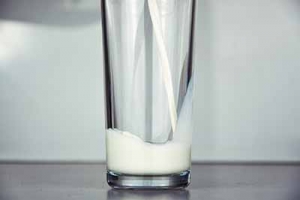FODMAPS and Exercise

Dayton Kelly
FODMAPs: A culprit in exercise-induced gastrointestinal distress and an explanation for athlete adoption of gluten-free diets
This article was adapted from a combination of speeches given at the European Sports Science Conference 2018, most notably Dana Lis (University of California, US).
 You may have reached this article from a preceding one on gluten-free dieting in healthy populations; if not, you can find it here.
You may have reached this article from a preceding one on gluten-free dieting in healthy populations; if not, you can find it here.
FODMAP is an acronym that stands for fermentable oligo-, mono-, disaccharides and polyols. These compounds are short carbohydrates that occur in a variety of foods including milk, fruits, wheat-based products, onions, and garlic. They are of interest because research is beginning to attribute the exercise benefits some athletes report while following a gluten-free diet to a concurrent restriction of FODMAPs. Recently, many anecdotal reports from athletes have emerged suggesting a gluten-free diet reduces gastrointestinal distress during exercise and improves performance. However, this claim and others supporting gluten avoidance in healthy individuals have not been supported by investigations manipulating gluten consumption.
Related Article: Gluten-free Diet and Exercise
If not gluten, then FODMAPs?
While gluten does not appear to cause these symptoms in healthy individuals, high FODMAP consumption does. Seven days of FODMAP restriction prior a time trial lead to reduced symptoms of gastrointestinal discomfort as compared to 7 days of a regular diet. Further, in a sample of athletes who report reducing FODMAP consumption, 83% report benefits to gastrointestinal comfort. Several other investigations have replicated these findings.
This is particularly interesting because FODMAP content in food seems to overlap considerably with gluten. Thus, individuals experiencing reduced gastrointestinal symptoms during exercise while following a gluten-free diet may not have fewer symptoms for lesser gluten consumption, but instead for the concurrent restriction of FODMAPs. The high prevalence of athletes reporting these benefits may be further explained by the fact that the high carbohydrate foods athletes typically consume are known to be high in FODMAPs; reports estimate usual athlete consumption of FODMAPs to be over 2x the recommended intake.
Related Article: Gene-base Nutrition: Can it Benefit You?
How do FODMAPs produce symptoms?
It is thought that FODMAPs are poorly absorbed and digested in the gastrointestinal tract of afflicted athletes and, further, that this poor absorption is augmented by gastrointestinal inflammation as occurs with repeated exercise. By remaining in the gut FODMAPs osmotically draw water into the small intestine producing diarrhea and a frequent, urgent need to use the washroom. Further, these undigested FODMAPs may become fermented in the large intestine leading to painful bloating/cramping.
The Takeaway.
 High FODMAP consumption may explain some cases of gastrointestinal distress during exercise. Individuals who commonly suffer from this type of distress may benefit from experimenting with limited FODMAP intake. As FODMAPs, like gluten, are found in many foods, following a FODMAP restricted diet may be difficult and lead to an inadequate nutrient intake. Therefore, the best strategy may be to limit FODMAP consumption over a short period (~3 days) prior competition to avoid gastrointestinal distress, while preserving nutrient intake over training prior to ensure overtraining does not occur and training adaptions are maximized. Future research is necessary to further explore FODMAPs and their capacity to influence performance.
High FODMAP consumption may explain some cases of gastrointestinal distress during exercise. Individuals who commonly suffer from this type of distress may benefit from experimenting with limited FODMAP intake. As FODMAPs, like gluten, are found in many foods, following a FODMAP restricted diet may be difficult and lead to an inadequate nutrient intake. Therefore, the best strategy may be to limit FODMAP consumption over a short period (~3 days) prior competition to avoid gastrointestinal distress, while preserving nutrient intake over training prior to ensure overtraining does not occur and training adaptions are maximized. Future research is necessary to further explore FODMAPs and their capacity to influence performance.
Related Article: The Best Way to Prevent Gut Rot During Your Workout
Additional readings:
Gibson, P. R., & Shepherd, S. J. (2010). Evidence‐based dietary management of functional gastrointestinal symptoms: the FODMAP approach. Journal of gastroenterology and hepatology, 25(2), 252-258.
Lis, D., Ahuja, K. D., Stellingwerff, T., Kitic, C. M., & Fell, J. (2016). Food avoidance in athletes: FODMAP foods on the list. Applied Physiology, Nutrition, and Metabolism, 41(9), 1002-1004.
You Might Like:













